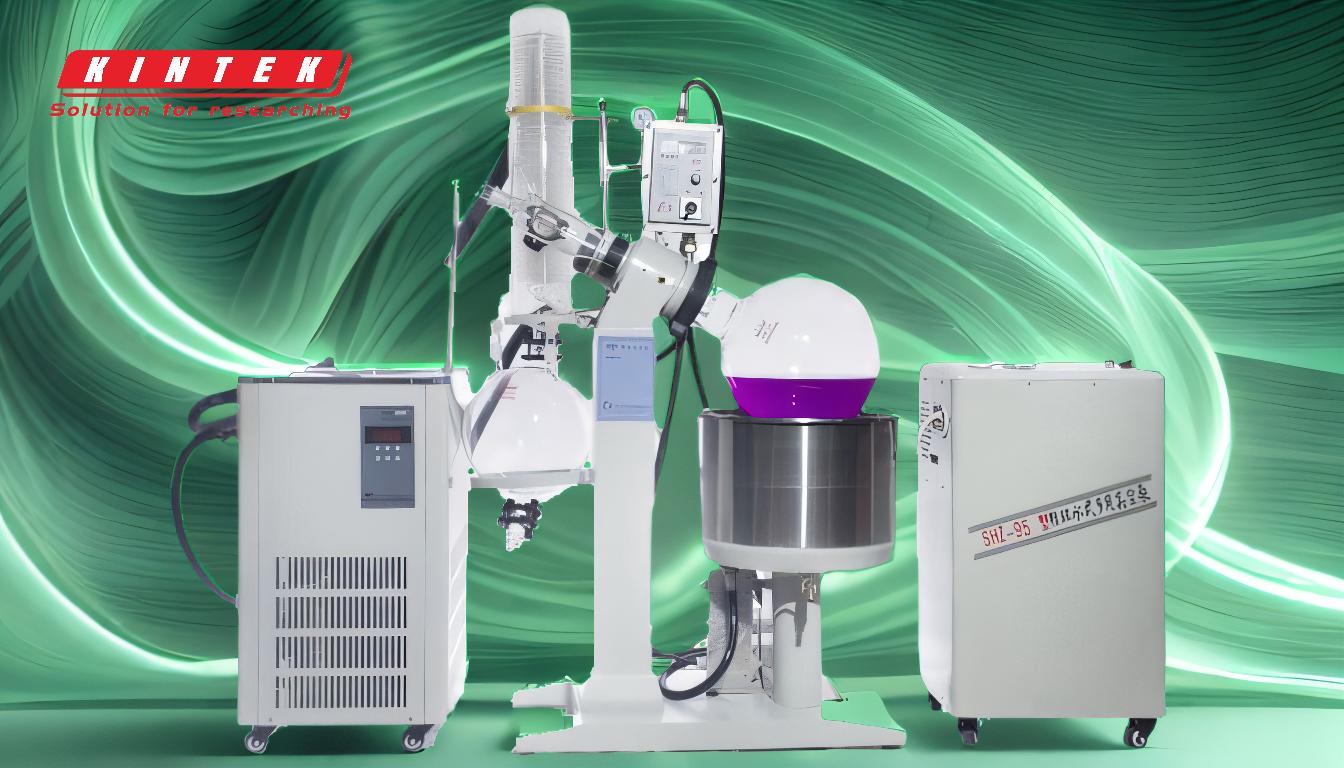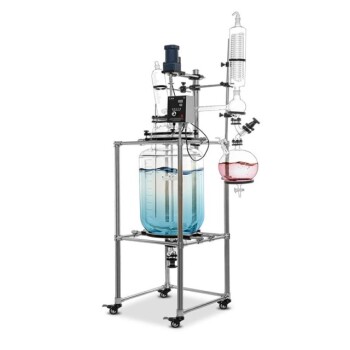The 20/40/60 rule in rotary evaporation (rotovap) is a guideline for optimizing the temperature settings of the system to ensure efficient solvent removal while maintaining energy efficiency and preventing damage to the equipment. It involves maintaining specific temperature differences between the bath, vapor, and condenser to achieve optimal condensation and evaporation rates. By following this rule, users can balance high evaporation output with energy consumption, ensuring the system operates effectively without overloading the condenser or vacuum pump.
Key Points Explained:

-
Understanding the 20/40/60 Rule:
- The 20/40/60 rule is a temperature optimization guideline for rotary evaporation systems.
- It suggests maintaining a 20°C difference between the bath temperature, vapor temperature, and condenser temperature.
- For example:
- If the bath temperature is set to 60°C, the vapor temperature should be 40°C, and the condenser temperature should be 20°C.
- This ensures efficient energy transfer and prevents overloading the condenser or vacuum pump.
-
Purpose of the Rule:
- The rule aims to balance efficient solvent evaporation with energy usage.
- It prevents setting the chiller temperature too low, which can reduce system efficiency and increase energy consumption.
- By maintaining the recommended temperature differences, the system operates at optimal performance without unnecessary strain on components.
-
Application in Practice:
- Bath Temperature: This is the temperature of the heating bath, which directly affects the solvent's evaporation rate.
- Vapor Temperature: This is the temperature of the solvent vapor as it rises from the flask to the condenser.
- Condenser Temperature: This is the temperature of the cooling system, which condenses the vapor back into liquid form.
- The 20°C difference between each stage ensures that the solvent condenses effectively without requiring excessive cooling or heating.
-
Benefits of the Rule:
- Energy Efficiency: By avoiding excessively low chiller temperatures, the system uses energy more efficiently.
- Equipment Protection: Maintaining the recommended temperature differences prevents damage to the vacuum pump and condenser.
- Optimal Evaporation: The rule ensures that solvents evaporate quickly and condense efficiently, improving overall productivity.
-
Common Mistakes to Avoid:
- Setting the chiller temperature too low, which can reduce efficiency and increase energy costs.
- Overfilling the round-bottom flask, which can lead to poor evaporation rates and potential spillage.
- Ignoring the temperature differences, which can result in incomplete condensation or system overload.
-
Example Scenario:
- Suppose you are evaporating a solvent with a boiling point of 50°C.
- According to the 20/40/60 rule:
- Set the bath temperature to 60°C.
- The vapor temperature will be approximately 40°C.
- Set the condenser temperature to 20°C.
- This setup ensures efficient evaporation and condensation while minimizing energy usage.
By following the 20/40/60 rule, users can optimize their rotary evaporation process, ensuring efficient solvent removal, energy savings, and equipment longevity.
Summary Table:
| Aspect | Details |
|---|---|
| Bath Temperature | Set at 60°C for efficient solvent evaporation. |
| Vapor Temperature | Maintain at 40°C for optimal energy transfer. |
| Condenser Temperature | Set at 20°C to ensure effective condensation without overloading the system. |
| Key Benefits | Energy efficiency, equipment protection, and optimal evaporation rates. |
| Common Mistakes | Avoid low chiller temperatures, overfilling flasks, and ignoring temperature differences. |
Optimize your rotary evaporation process today—contact our experts for personalized guidance!

















